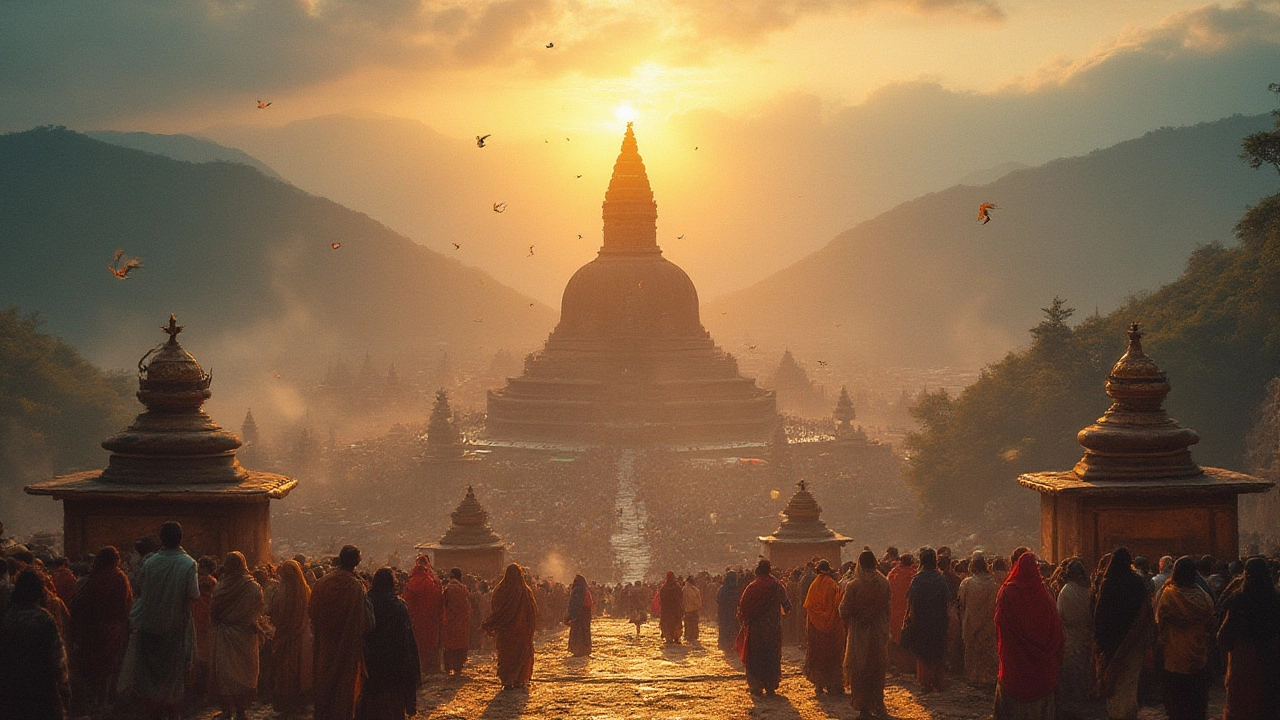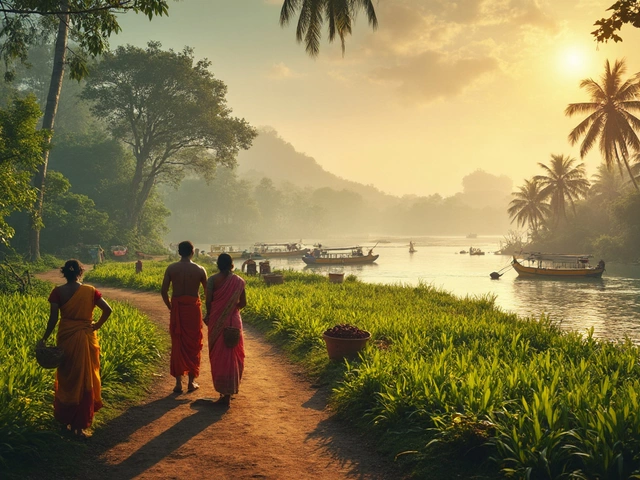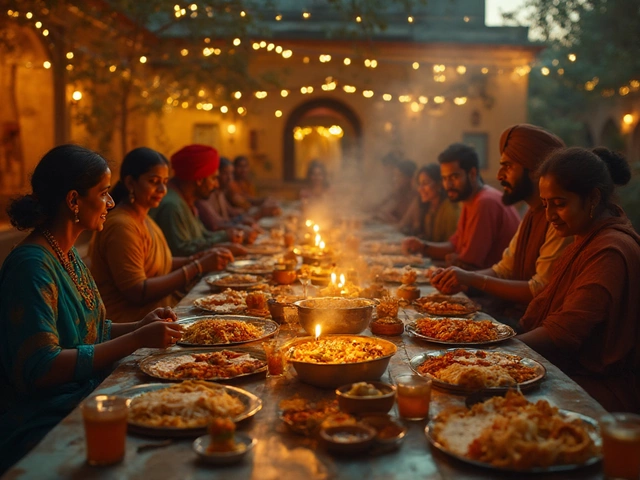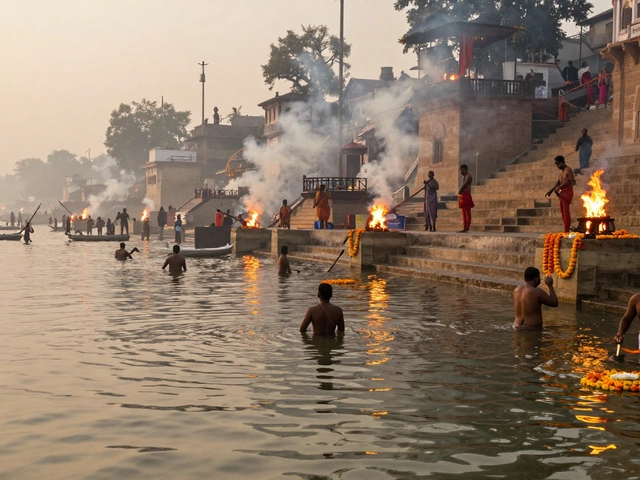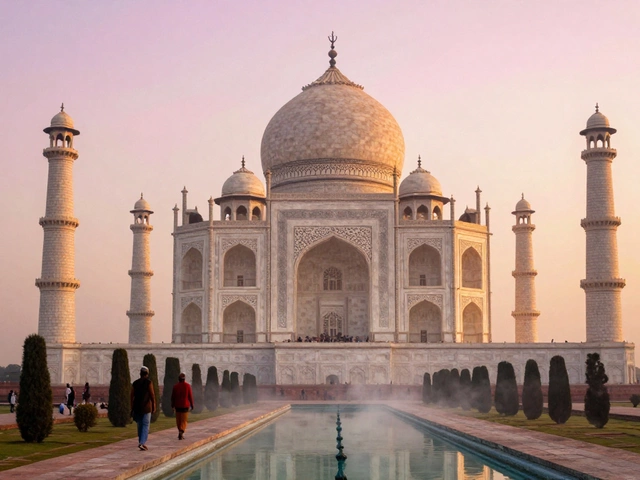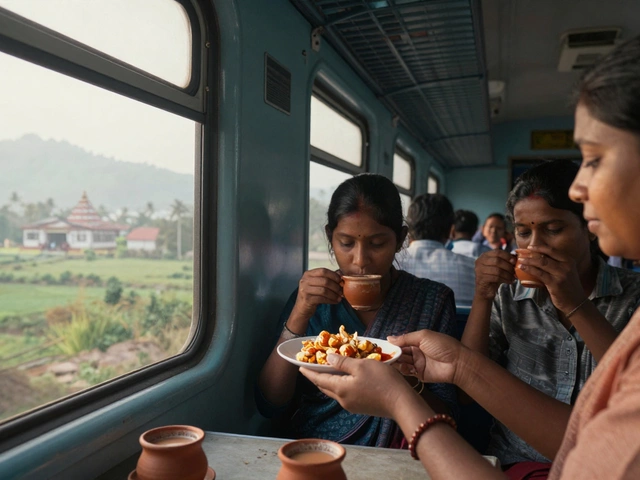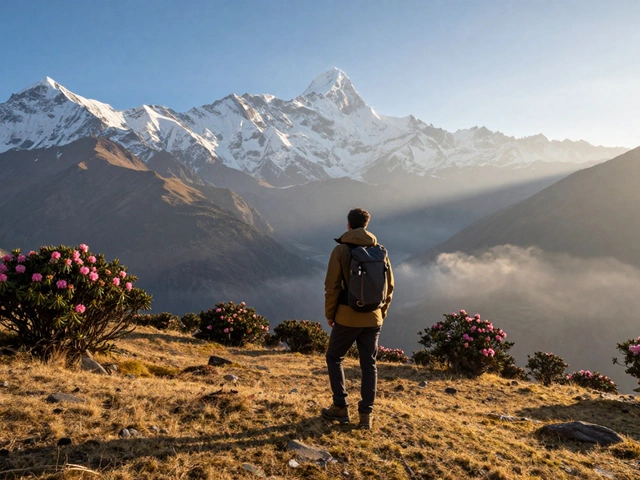If you’ve ever wandered through India with even a passing curiosity about its ancient roots, you’ll eventually stumble into the maze of stories surrounding the 12 jyotirlingas. Picture this: thousands of travelers every year, their heads still jet-lagged from Delhi or Mumbai arrivals, hit the road or rail on a mission across the length and breadth of the country, chasing the legendary glow of these age-old shrines. Even if you aren’t on a religious quest yourself, the jyotirlingas throw open the door to India’s tangled history, jaw-dropping architecture, and wild personal stories of hope and miracles.
Unraveling the Mystery: What Exactly are Jyotirlingas?
Jyotirlingas sound like something pulled straight from a temple mural—ornate, almost mystical. But if you strip away the poetry, at their core they’re dazzling representations of Lord Shiva, one of the trinity gods in Hindu belief. The word itself blends ‘jyoti’ (light) and ‘linga’ (a symbolic Shiva form), suggesting pillars of divine radiance. The earliest scriptures, like the Shiva Purana, spin tales of 64 jyotirlingas, but only 12 are considered super-special—their fame sealed by time, tradition, and waves of devoted visitors. These 12 are scattered across India's chaotic tapestry, from Somnath perched by the roaring Arabian Sea, to Rameshwaram nearly brushing Sri Lanka’s coast.
Legend credits the origin of these shrines to an argument between Lord Vishnu and Lord Brahma over who among them was supreme. Shiva appeared as an endless column of light, challenging them to find its beginning or end. Neither could, and thus, the locations where this 'pillar of light' touched the earth are marked by a jyotirlinga. Today, each shrine claims its own slice of mythology and local pride, and a visit here isn’t about ticking boxes but stepping into living legends.
There’s no single circuit—the jyotirlingas demand commitment from any traveler. And not just physical grit. These spots are busy during festival months and have spawned micro-economies: priests, guides, and local craftspeople who live and breathe the rhythm of pilgrim life. Some families plan for years to manage all twelve in a lifetime, seeing completion as a spiritual jackpot.
Mapping the 12 Jyotirlingas: Locations and Lore
Let’s get specific. Here’s a handy table to get your bearings and maybe spark your own Shiva circuit adventure:
| Name | Location (State) | Unique Fact |
|---|---|---|
| Somnath | Gujarat | Older than written history; repeatedly rebuilt after invasions |
| Mallikarjuna | Andhra Pradesh | Known as "Kailash of the South" for its beautiful setting |
| Mahakaleshwar | Madhya Pradesh | Only jyotirlinga facing south, symbolizing Shiva as destroyer |
| Omkareshwar | Madhya Pradesh | Located on an island shaped like ॐ (Om), the sacred symbol |
| Kedarnath | Uttarakhand | Himalayan backdrop; can only be reached by trek or helicopter |
| Bhimashankar | Maharashtra | Sits deep in the greenery of Western Ghats forest |
| Vishwanath (Kashi) | Uttar Pradesh | Right by the Ganges in Varanasi, India's holiest city |
| Trimbakeshwar | Maharashtra | Source of the Godavari River, revered as the Ganga of the south |
| Vaidyanath | Jharkhand | Known for healing powers; visited by millions in Shravan month |
| Nageshwar | Gujarat | Believed to protect against poisons and evil |
| Ramanathaswamy | Tamil Nadu | Linked to epic Ramayana; famous for world's longest corridor |
| Grishneshwar | Maharashtra | Small but significant; close to UNESCO-listed Ajanta & Ellora caves |
Visiting all these places isn’t a mere spiritual sprint but a cultural deep-dive. Imagine walking from the salt-bleached temples of Somnath to the mountain winds of Kedarnath—each journey comes with dramatic shifts in language, food, dress, and beliefs. You’re dipping in and out of fables, but also witnessing centuries of faith stitched into everyday life.
Every jyotirlinga carries its own local legend. The Somnath temple, for instance, is tied to the moon god’s penance for a curse. The Kashi Vishwanath in Varanasi is believed to offer liberation just by a whisper at its doors. In Rameshwaram, Rama supposedly built a lingam from sand before crossing to Lanka. Even the architecture varies wildly: Rameshwaram’s endless pillared hallway seems to go on forever, while Kedarnath’s stone simplicity blends into the Himalayan grey.
Here’s a pro tip if you’re plotting a tour: pick your time. Summers can be brutal in most places except Kedarnath and Mallikarjuna. During the monsoon months (usually July-August), sites like Bhimashankar become almost impossible to reach thanks to flooding or slippery mountain roads. Planning ahead can save you a lot of headaches and keep the magic alive.
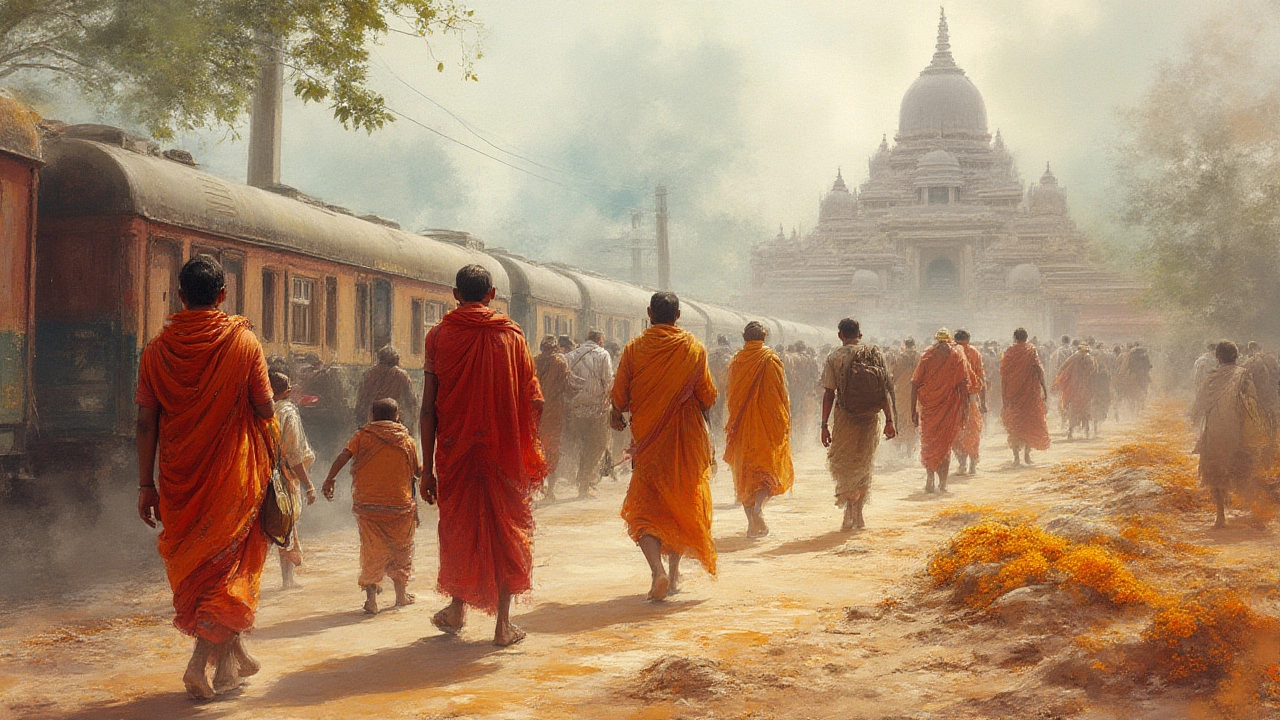
How Pilgrimage Shapes India’s Soul
Even if you’re not particularly religious, it’s hard to ignore the sheer human drama that swirls around the jyotirlingas. It’s movement on a massive scale—families, barefoot ascetics, people carrying their world in rucksacks, all united by a desire to stand before these age-old idols. Pilgrimage, in India, is less about sitting in silent prayer and more about being part of a spontaneous, never-ending parade.
You’ll see all ages. Little kids, no bigger than my daughter Aria, walking valiantly beside their grannies while chanting Shiva’s many names. Food stalls pop up along routes to serve khichdi, fruits, and sweetened milky tea. At Vaidyanath, bags overflow with colorful offering baskets. In Varanasi’s Kashi Vishwanath, it’s the riotous clanging of temple bells and a crush of visitors pressing forward at dawn. The energy is contagious. You can’t help but find your senses on high alert, picking up on the perfume of sandalwood, the crackle of incense, and snippets of stories traded over camp meals.
Pilgrimage here isn’t one-size-fits-all. Some walk hundreds of kilometers as an act of devotion, others arrive by luxury coaches, unwrapping tired ankles at every rest stop. As a travel experience, it’s equal parts stunning and exhausting. But at the end of the road lies a shared heartbeat—a sense that you are part of something absolutely ancient. If you’re looking to catch a glimpse of how India’s much-talked-about diversity survives year after year, this is it.
According to Devdutt Pattanaik, author of several books on Indian mythology,
“The jyotirlinga is as much about the journey as the destination. Pilgrims learn the stories by living them—even the rough patches become part of a personal legend.”
Don’t be surprised if some of these shrines feel like thunderous festivals on regular days. Special months, like Shravan (usually July-August), transform sites like Bhimashankar and Vaidyanath into a colorful, bustling sea of humanity. There are elaborate processions, music, and even local fairs stacked with crafts and street performances. It’s India fully alive.
Tips for Traveling the Jyotirlinga Circuit
Thinking of checking out the 12 jyotirlingas? It’s doable, but there are caveats, and planning is half the battle. The physical distances are huge—spanning thousands of kilometers from one end of India to the other. Here’s a crash course to get you started:
- Research Transport: Railways cover most destinations, but some places (think Kedarnath) require hikes or helicopter rides. Be ready for sudden delays. Sleeper class has its charm, but for long trips, splurge on an AC coach if you can.
- Best Time to Visit: Avoid peak summer and monsoon, except for Himalayan shrines like Kedarnath. Winter (October-March) is usually pleasant for most spots.
- Dress Decently: Respect local customs—leave shorts and tank tops for the beach. Most men go for trousers and shirts; women do well in salwars or sarees. Carry a scarf to cover your head if required inside temples.
- Book Hotels Early: These towns fill fast during festival times. Apps and websites help, but smaller towns may require some legwork or trusted word-of-mouth recommendations.
- Prepare for Crowds: Especially during festivals like Mahashivratri, lines to the shrine doors can take hours. Get in early morning or late afternoon for the best experience.
- Local Etiquette: Learn a few Shiva chants; even a simple "Om Namah Shivaya" goes a long way. Carry enough small change for offerings and temple donations.
- Special Experiences: At Trimbakeshwar, join the aarti (prayer ritual) at sunset on the banks of the Godavari. In Somnath, catch the daily sound and light show that wraps you in myths under the stars.
- Stay Hydrated and Snack Smart: Roads are long and sometimes winding. Pack water, fruits, and dry snacks—especially for remote stretches.
One cool fact: the 12 jyotirlinga towns are getting friendlier for modern travelers. ATM availability has improved, and even in pilgrim-dense areas like Varanasi, you’ll find Wi-Fi zones and silent retreats if you need a break from the hustle.
Talking from mum-to-mum here—if you’re traveling with kids (like my Aria), turn each visit into a treasure hunt. Challenge them to spot unique carvings, listen for mantras, or draw something cool from the temple surroundings. Kids pick up on the vibe and make amazing memories.
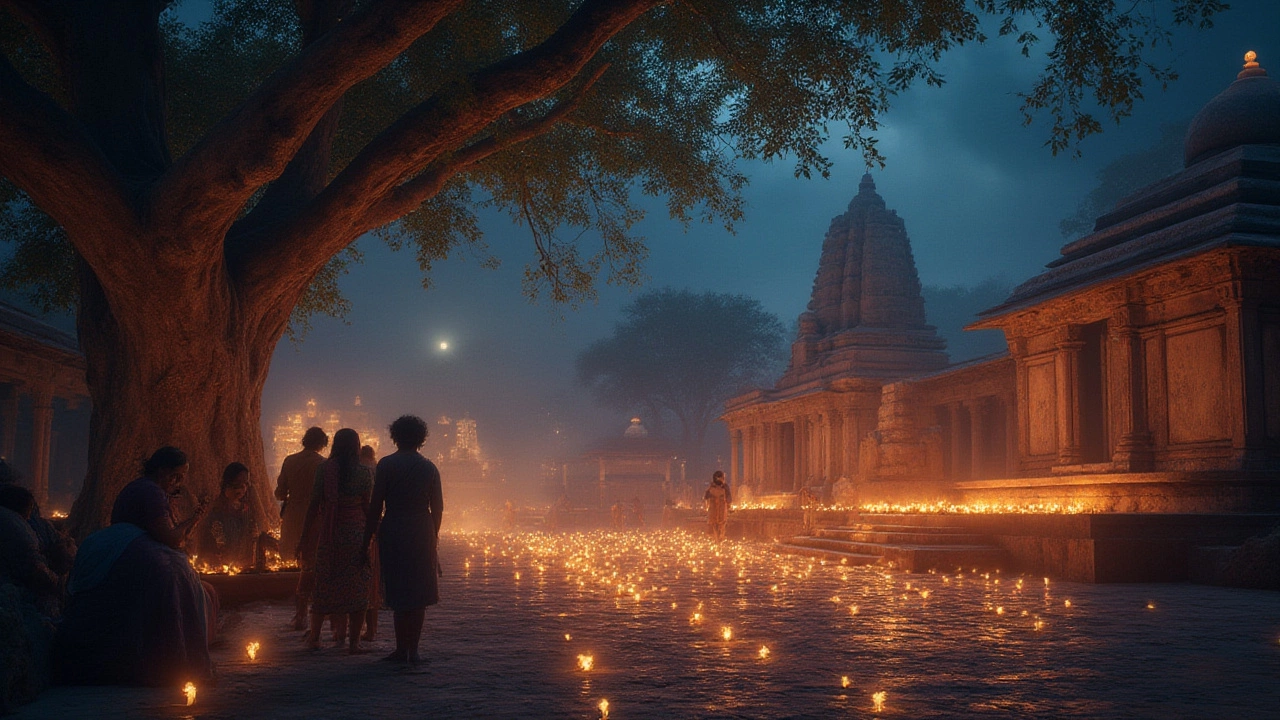
Beyond Faith: The Cultural and Historical Trail
India’s jyotirlingas don’t just pull religious crowds—they’ve lured pilgrims, poets, kings, invaders, and wandering hippies. These shrines have literally stood through centuries of conflict, construction, and wild twists of fate. Somnath, for example, has been attacked and rebuilt at least 17 times—think of the stories those old stones must hold.
Architecture stuns. The Nagara style in Somnath’s spires, the Dravidian grandeur at Rameshwaram, the compact elegance of Grishneshwar, and the mighty walls of Mahakaleshwar—they all tell you something about the era and people who crafted them. These places serve as living museums. You’ll often bump into families who’ve visited for generations; ask any local, and they’ll whip out a story—maybe about a wish that came true or a brush with the miraculous.
Here’s something I find fascinating: while the jyotirlingas are rooted in faith, they also drive regional economies. Craft markets blossom around temples—wood carvings in Kedarnath, beaded malas in Bhimashankar, and sparkling silver trinkets at Trimbakeshwar. Plus, the local cuisine: Varanasi’s kachoris, Gujarat’s thepla, and Tamil Nadu’s filter coffee—perfect fuel for a day spent temple-tripping.
While walking through the corridors of Ramanathaswamy in Rameshwaram, you’re as likely to meet a scientist as a sadhu. During festivals, scholars hold talks on cosmology, history, and architecture, adding cerebral spice to the spiritual fare. The temples also act as living banks of oral history, passing down beliefs and values way beyond religious boundaries.
Many modern artists, filmmakers, and musicians draw creative inspiration from their jyotirlinga visits. Even Bollywood has immortalized many of these centers—think heady songs shot on the ghats of Varanasi, or slow pans over the Himalayan trails to Kedarnath.
The call of the 12 jyotirlingas isn’t just about checking off a must-see list; it’s about soaking in the ebb and flow of India’s spiritual, artistic, and social lifeblood. Go with an open mind (and a sturdy pair of shoes), and India’s great Shiva circuit will leave you with stories well beyond Instagram highlights.
